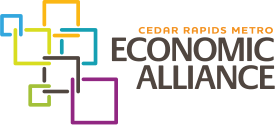Chapter 7 Attorneys
Contact Us: Chapter 7 Inquiry
Contact us to discuss your inquiry using this form, or call our office at (319) 366-1000.
All fields are required.
Chapter 7 Bankruptcy Law in Cedar Rapids
Chapter 7 is the preferred option for most people, because it involves wiping out your unsecured debt without paying anything. In order to qualify to file a chapter 7, there are two tests that you must pass. One test is called the means test. This test was added to the bankruptcy law when it was changed in October of 2005. You have to bring into our office all of the pay stubs you have received within the six-month period before you file, and a record of all other money received, such as child support, unemployment compensation, or workers compensation. We turn this information over to the US Trustee’s office. When you file bankruptcy, you are in federal court. The US Trustee’s office is a division of the Department of Justice. The trustee’s office oversees the bankruptcy process, to make sure that everyone is playing by the rules. The trustee takes the amount of income that your household had in the previous six months and doubles it to create a fictional annual income for your household. They then compare that amount to a chart they have that tells them what the median income is for a household of the same size in the State of Iowa. If your fictional income is below the median, you may file a chapter 7 petition. If your income is above the median, then the rest of the means-testing form must be filled out, to see if your disposable income can be lowered below the threshold amount. If it is still too high, then your only option is to a chapter 13 petition.
The second test to qualify to file a chapter 7 petition is basically a budget test. You have to be able to show the judge that pretty much all of your available income is required to pay your month-to-month living expenses and those bills that you would still be paying even after you filed bankruptcy, such as secured loans that you decide to keep or nondischargeable debts. If you can show the judge that kind of budget, that means you are legally insolvent, because you are insolvent when you don’t have enough cash flow to both pay your current expenses and your debts. If that is the jam you are in, then you pass the budget test to file a chapter 7 petition.
If you pass both of the tests described above, there isn’t a magic amount of money that you have to owe in order to qualify to file bankruptcy. The law leaves it up to you to decide if your situation is hopeless as far as paying your debt, given your income and living expenses. Bankruptcy is a very powerful tool for giving yourself a chance to wipe your slate clean and make a new beginning, get a fresh start. If you decide that you need to get a fresh start, the judge will allow you to do that.
If on the other hand, when you prepare your budget, you have a significant amount of money left over after you pay all of your living expenses that could be paid toward your debts, then you do not qualify for chapter 7 and your only option is to file a chapter 13 petition.
Learn more about working with attorney Henry Nathanson at his personal website.
Call our office in Cedar Rapids at (319) 366-1000 to schedule your initial consultation and learn how we can help.





